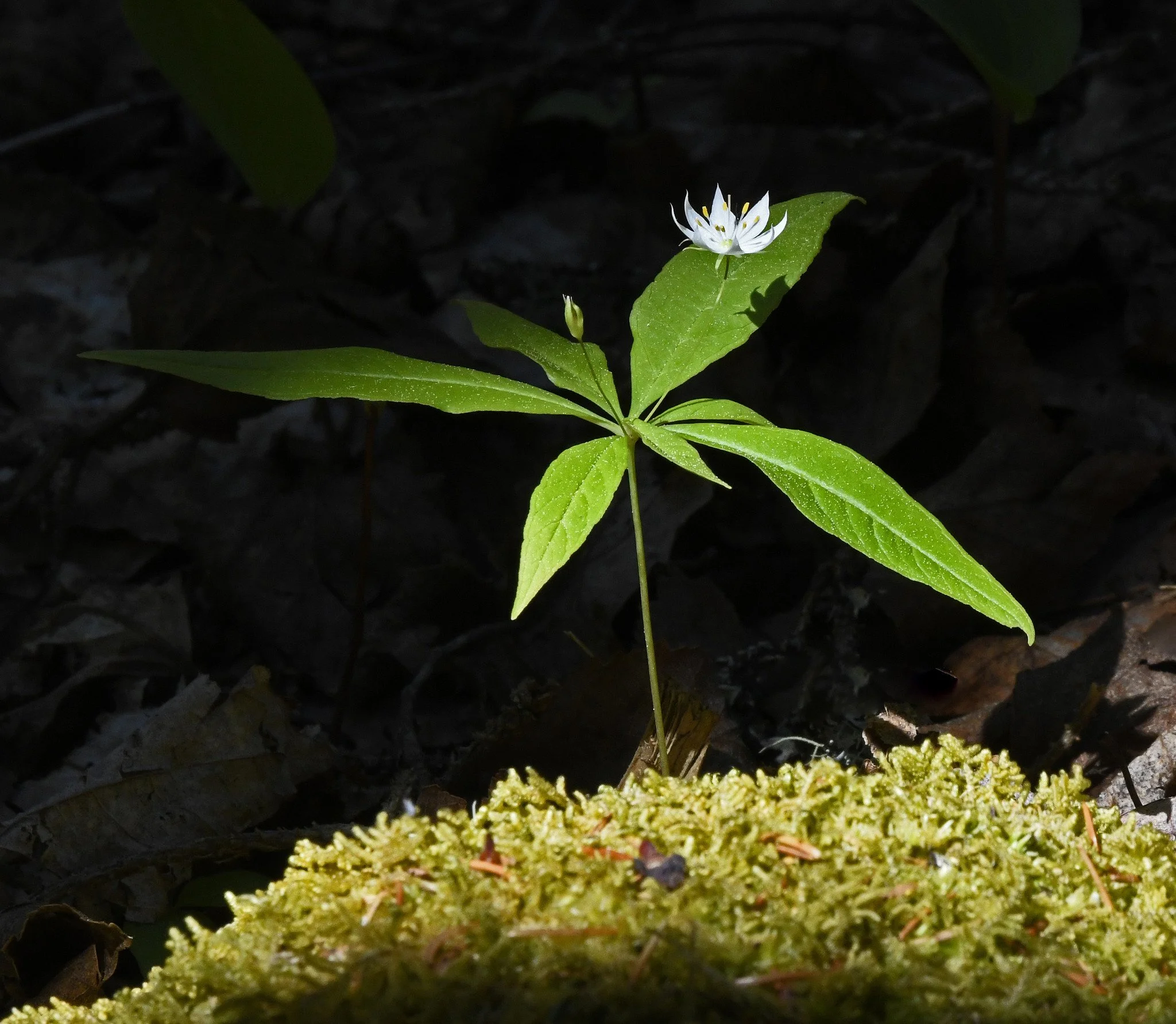One of the daintiest of our spring plants is blooming now in shaded and dappled parts of the woods. It’s the starflower plant, which looks a bit like a tiny tropical tree before its flowers bloom.
The plant has a Latin scientific name that is descriptive: Trientalis borealis (Raf.). Trientalis means “one-third of a foot,” which is about the plant’s mature height; borealis means “northern” or “from the north.” (Nonetheless, starflowers do grow in parts of the Midwest and the higher altitudes of the southern Appalachian Mountains.)
The starflower plant is a perennial herb that grows from thin, creeping rhizomes that allow it to live in the oddest places (see below). Its simple leaves occur in whorls of 5 to 9 at the tip of the stem. The flowers occur as a single bloom or sometimes 2 to 3 blooms on thin (almost invisible) stalks. The flowers are approximately 1/4 to 1/2 inch in diameter and have 5 to 9 white petals.
Finally, if you’re a hopeful person, you might want to search for your lucky starflower and make a wish on it. “Lucky Stars” or “7-7s” are starflower plants that have a combination of seven leaves and a seven-petalled flower. They’re easier to find than four-leaf clovers. (Images taken in Brooklin, Maine, on May 23 and 24, 2023.)

